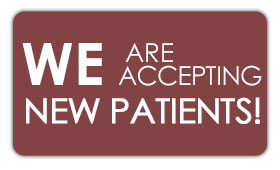Is back pain normal? Normal or not, nearly 80% of the population will experience back pain in their lifetimes. On average, 40% of Americans will have back pain in any one-year and 5% have thigh and or leg pain.
A disc herniation is a condition which affects the shock absorbing/dispersing cartilage between each vertebra, called the intervertebral disc. The intervetebral disc’s main function is to transmit loads through the spine and provide flexibility to the spinal column. The intervertebral disc is similar to a jelly doughnut in composition. The inside is made up of a “jelly like material,” called the nucleus pulposus, and 20-30 fibrous ring layers. The rings, called the anulus fibrosis,keep the jelly inside. Herniations are a result of a complete tear through the fibrous rings (anulus fibrosis), due to repetitive bending, incorrect posture, a poor workout regime, prolonged flexion, weak muscles and trauma. A majority of these tears go backwards and to the side (postero-lateral), because of a ligament that is directly behind the disc, which creates a disc “bulge” or “protrusion.” A complete tear in the disc will result in 1) the release of inflammatory chemical irritants, which causes pain or 2) the possible compression on the nerve, which results in pain, numbness and tingling (sciatica). The majority of spinal disc herniation cases occur in the lumbar region (95% in L4-L5 or L5-S1). The second most common site is the cervical region (C5-C6, C6-C7)
Disc herniations are typically a result of cumulative micro-trauma to the fibrous rings and not the result of a one-time event; although it may seem that way. A good example is bending a paper clip over and over until it breaks. This is similar to your back “going out” while you were picking up a sock. Symptoms of a herniated disc vary, depending upon the area of the herniation (neck, mid back or low back) and the different types of soft tissue that are involved. Pain from a herniated disc is usually continuous in a specific area of the body, unlike muscular pain that comes and goes. The typical disc herniation will cause pain while sitting or during transitional movements, (i.e. sit to stand), sneezing/coughing/bowel movement and bending forward. Some people experience discomfort while driving or getting out of bed in the morning. You may feel stiff in the morning and it takes you half an hour to “loosen up.” Patients have said that standing, laying on their belly and walking can decrease their pain. Victims of herniations often feel minimal, to no pain, if the inner disc is the only tissue injured. This is because only the outer 1/3 of the disc has a nerve supply. Until the tear has reached that point, you often feel only minimal discomfort. A more serious tear can result in unbearable neck or lower back pain, which radiates into the area supplied by the irritated or compressed nerve roots. Other symptoms of a disc herniation may include sensory changes, such as numbness and tingling, muscular weakness, paralysis, paresthesia, and abnormal reflexes.
Diagnosis is made by an examination of medical history and an orthopedic and neurological evaluation. Orthopedic test will be utilized to confirm or rule out other causes or symptoms, such as gross pathology, spondylolisthesis, piriformis syndrome, mechanical back pain and degeneration. X-rays are utilized to exclude, or include, other possible causes and MRI’s are the gold standard for the diagnosis and visualization of a disc herniation.
In the majority of cases, spinal disc herniation doesn’t require surgery. Initial treatment usually consists of non-steroidal, anti-inflammatory pain medication and icing. Chiropractic spinal manipulation has been demonstrated to be a safe and effective tool in the management of disc problems, especially when combined with therapeutic exercise. A 2014 study found that 90% of patients reported substantial improvements of their lumbar disc herniation within three months of receiving their first chiropractic adjustment. If conservative treatments are unsuccessful in reducing pain and discomfort, surgery may be considered as an option. Surgery may be indicated for a herniated disc that is causing progressive neurological deficits, bladder problems or loss of bowel control.
Tips for preventing disc herniations. 1) Avoid prolonged bent over postures 2) Avoid working out the first hour out of bed. You are most prone to injure your back the first hour after waking up. 3) Strengthen the core musculature that surrounds the spine. and 4) Exercise. Because the disc has a poor blood supply, it relies on movement to bring in nutrients and push waste products out. This is similar to a sponge taking in and releasing liquid.
It is interesting to note that a small-sample study, which examined the cervical spine in symptom-free volunteers, found disc bulges in 50% of participants. In 2000, researchers found that 20-70% of people with low back pain had coincidental occurrence of a herniated or degenerative disc. This research suggests that a considerable part of the population can have focal disc herniations in their spine and have no noticeable symptoms.

 I grew up in Dayton, Ohio and completed my chiropractic education at Logan College of Chiropractic in St. Louis Missouri. After graduating chiropractic school I moved to Nashville. I have practiced in Nashville for 10 years and Nolensville for over 7 years. I enjoy spending time with my family, dogs, golfing, kayaking, watching college sports and being an active member of the Nolensville community and serving its health needs.
I grew up in Dayton, Ohio and completed my chiropractic education at Logan College of Chiropractic in St. Louis Missouri. After graduating chiropractic school I moved to Nashville. I have practiced in Nashville for 10 years and Nolensville for over 7 years. I enjoy spending time with my family, dogs, golfing, kayaking, watching college sports and being an active member of the Nolensville community and serving its health needs.